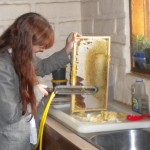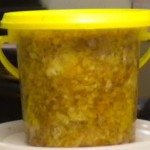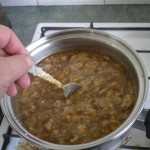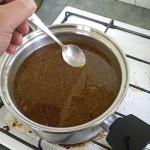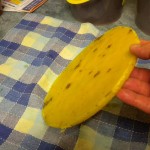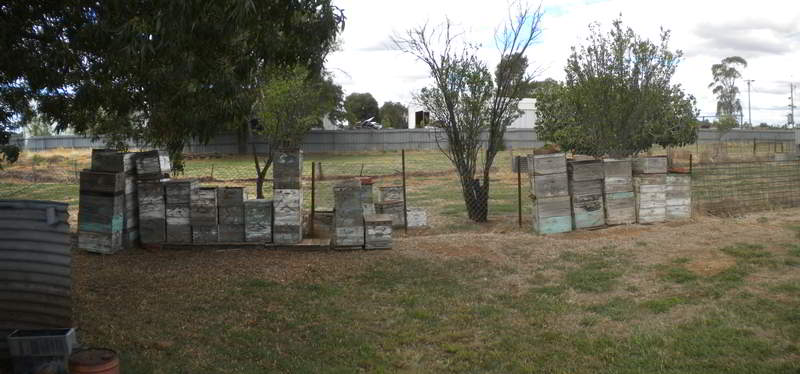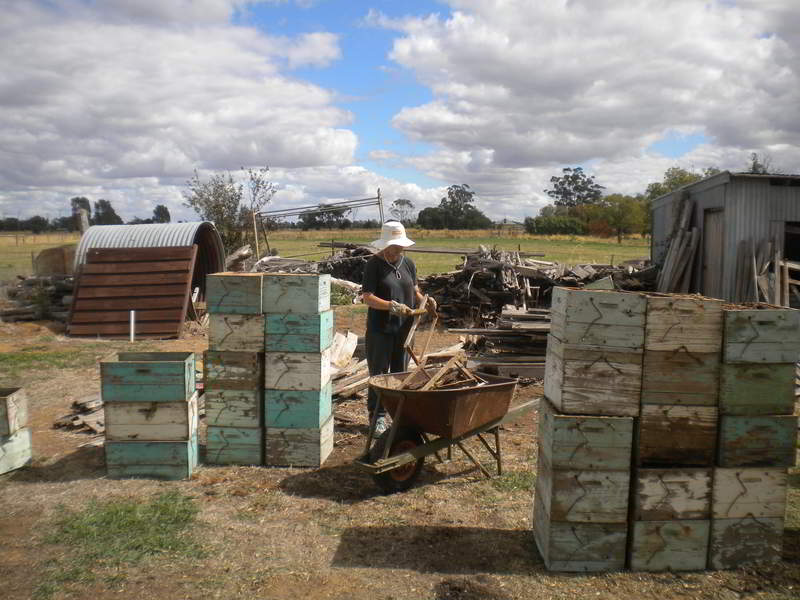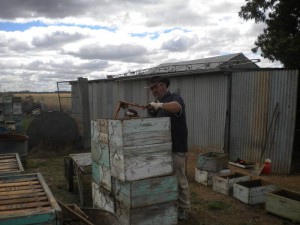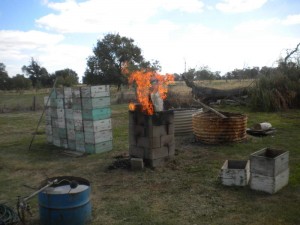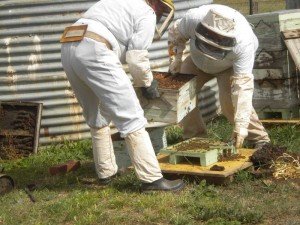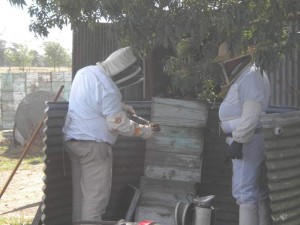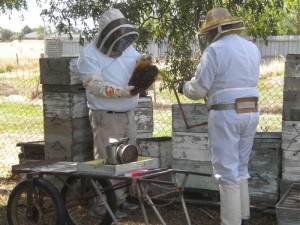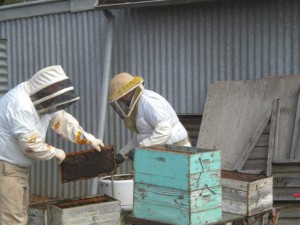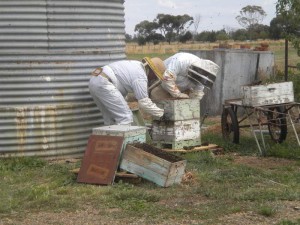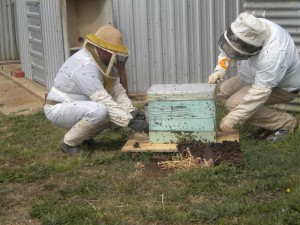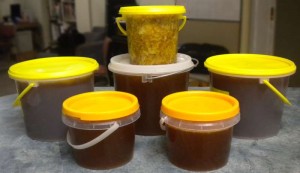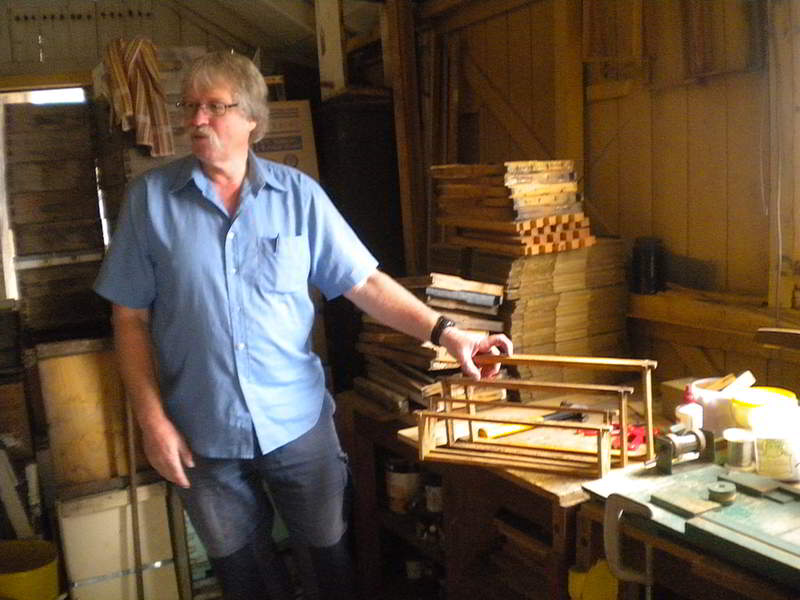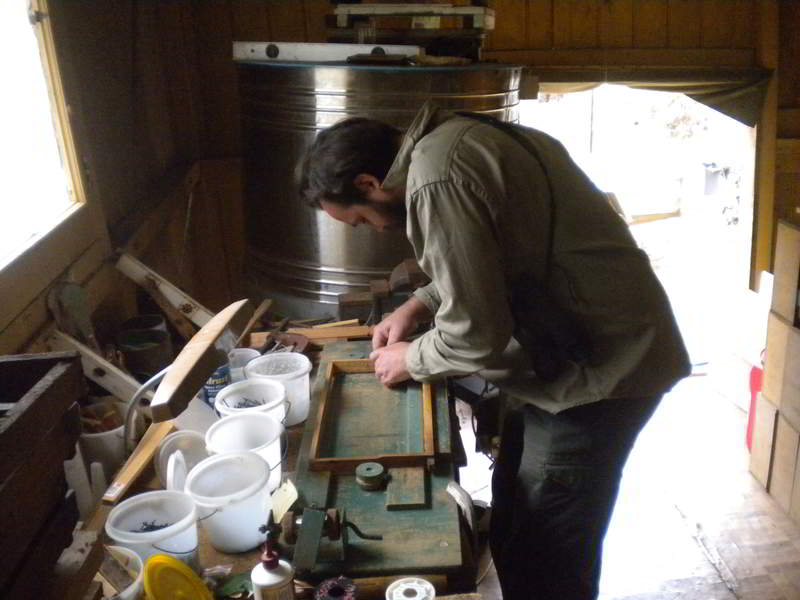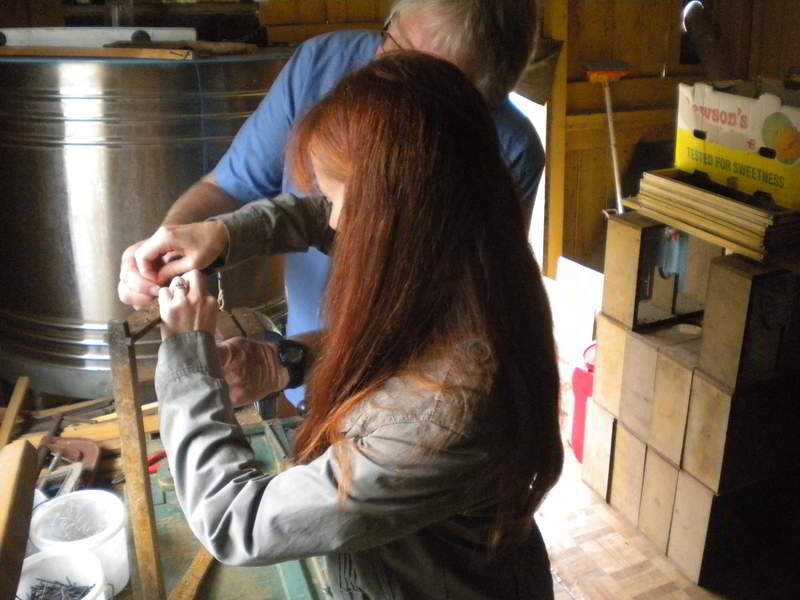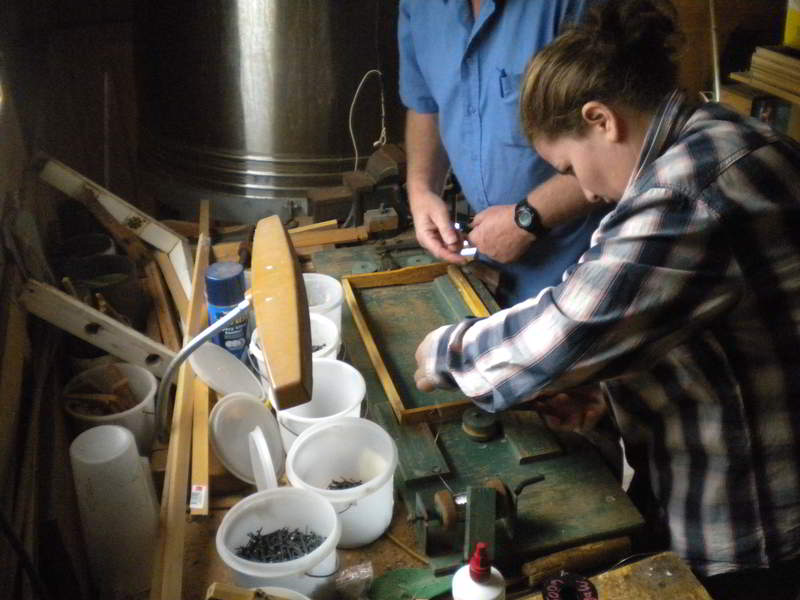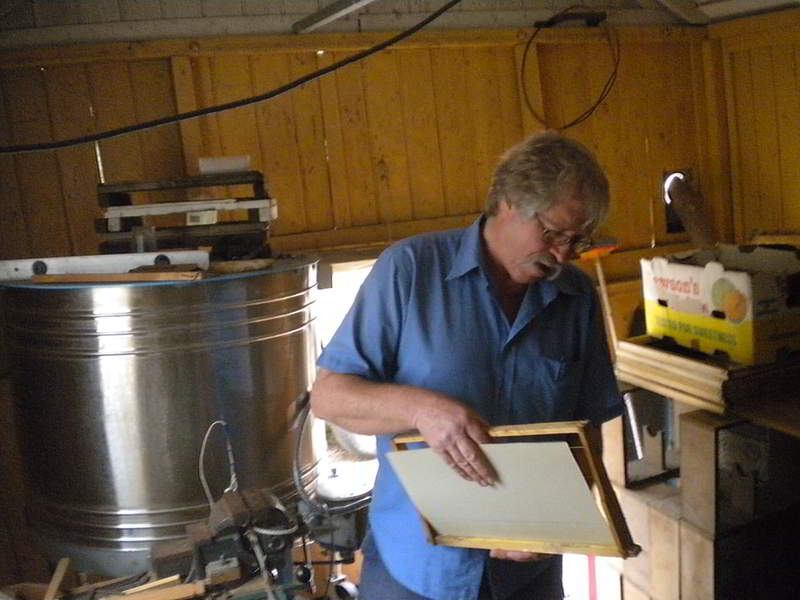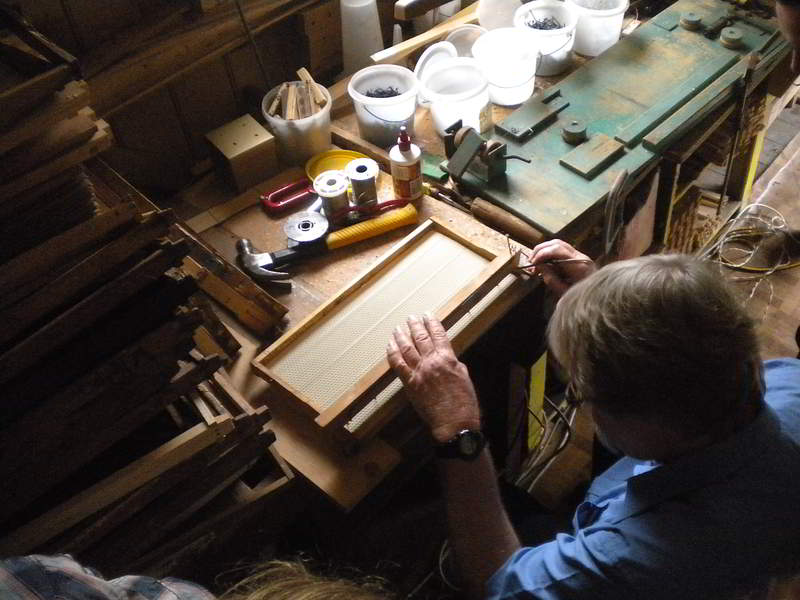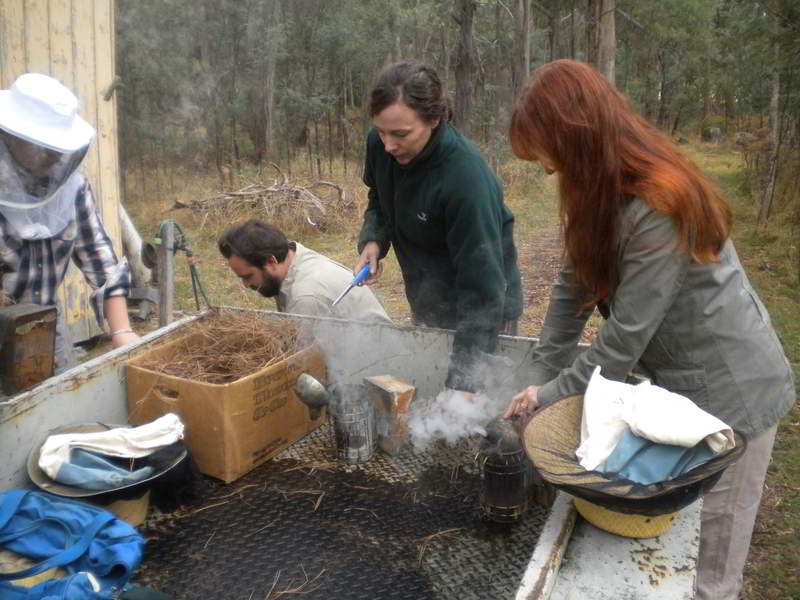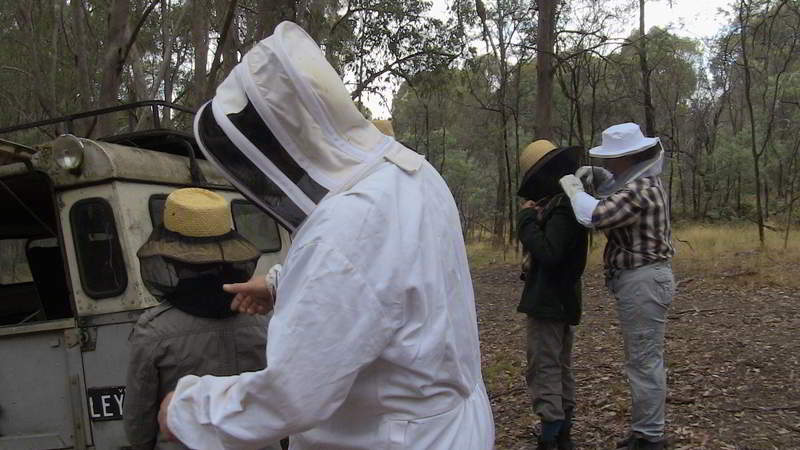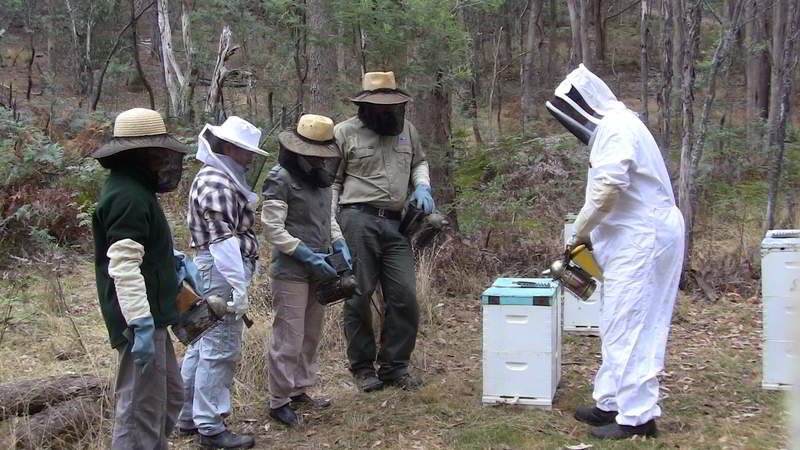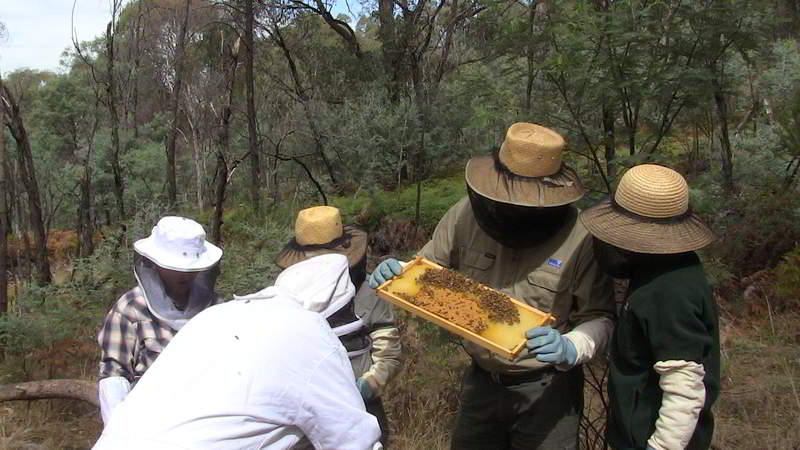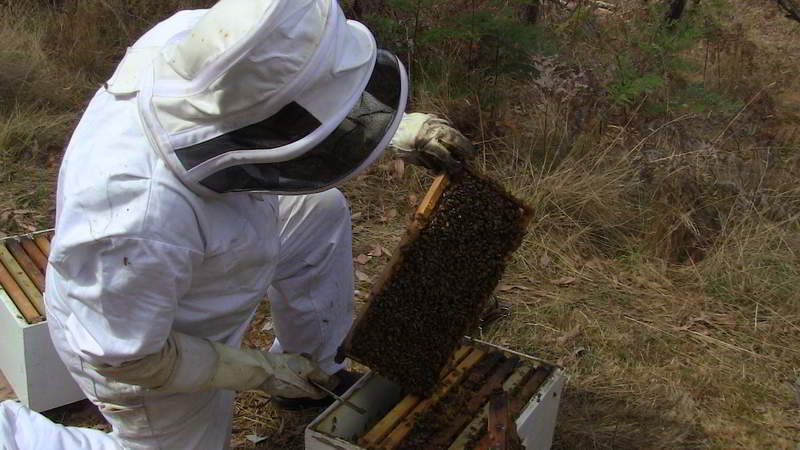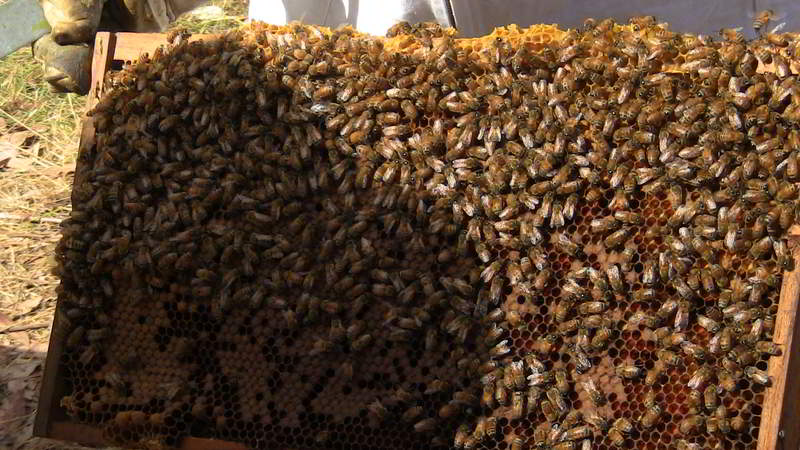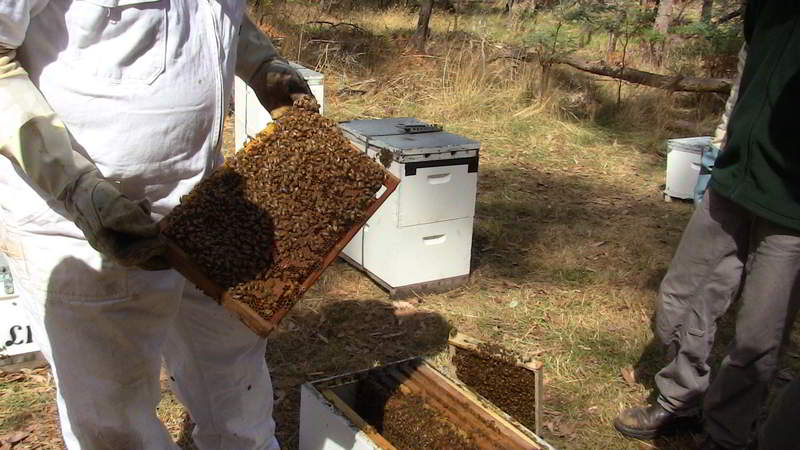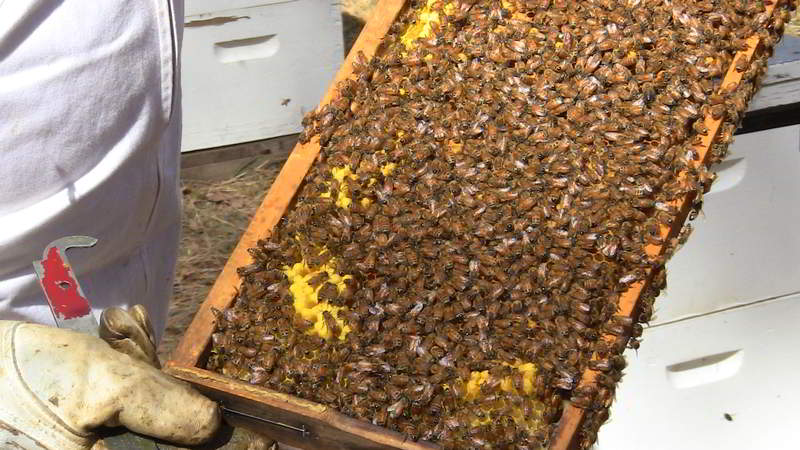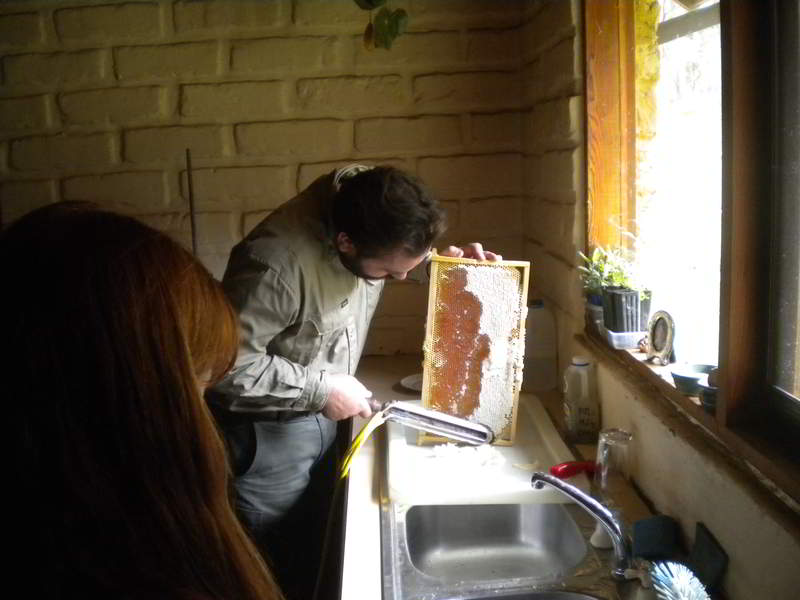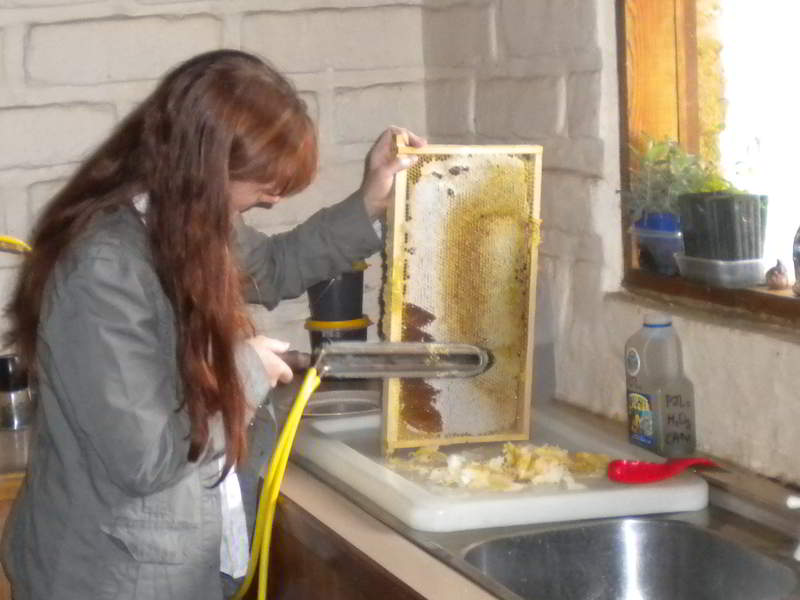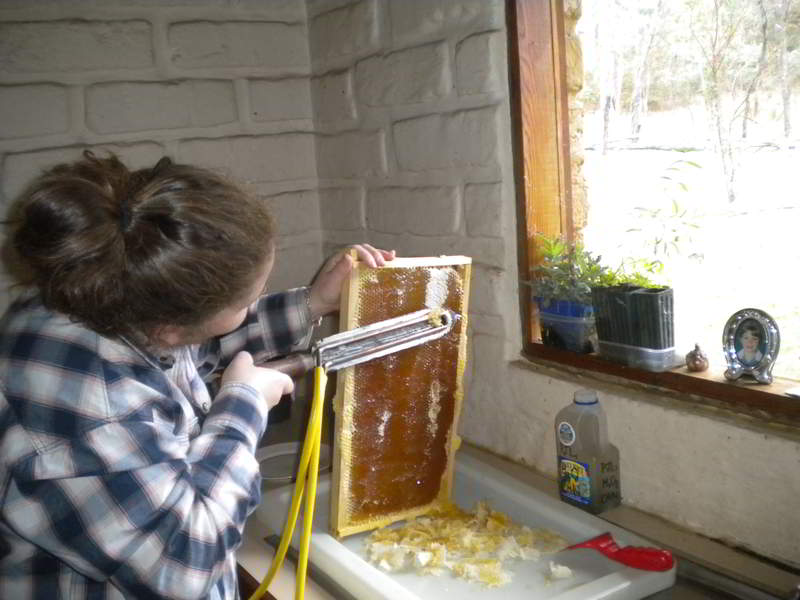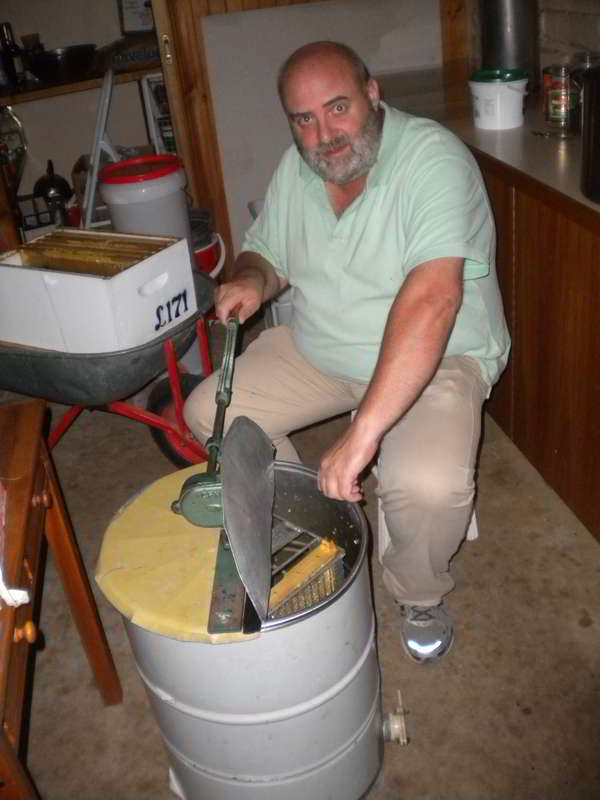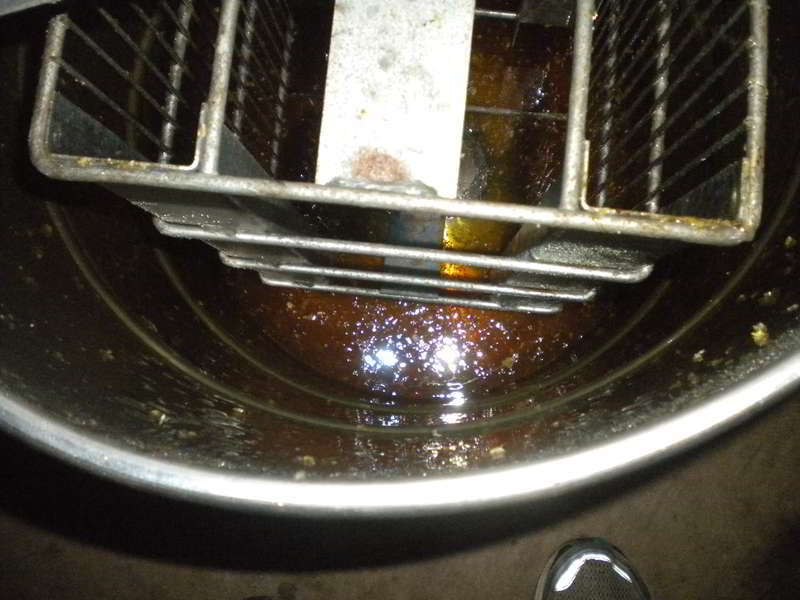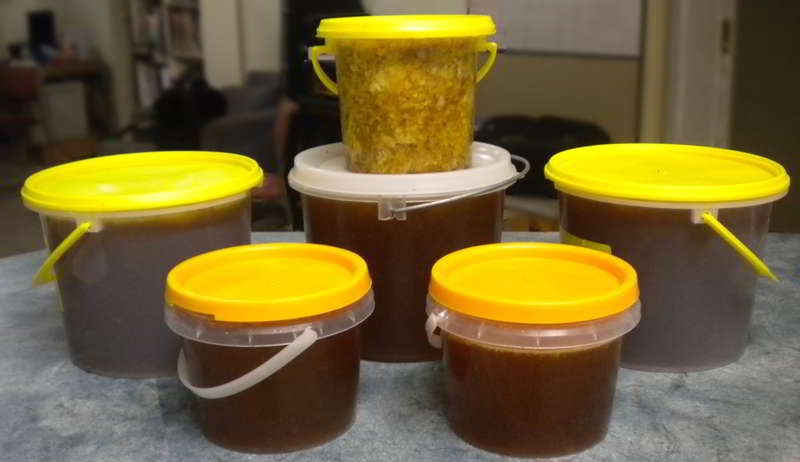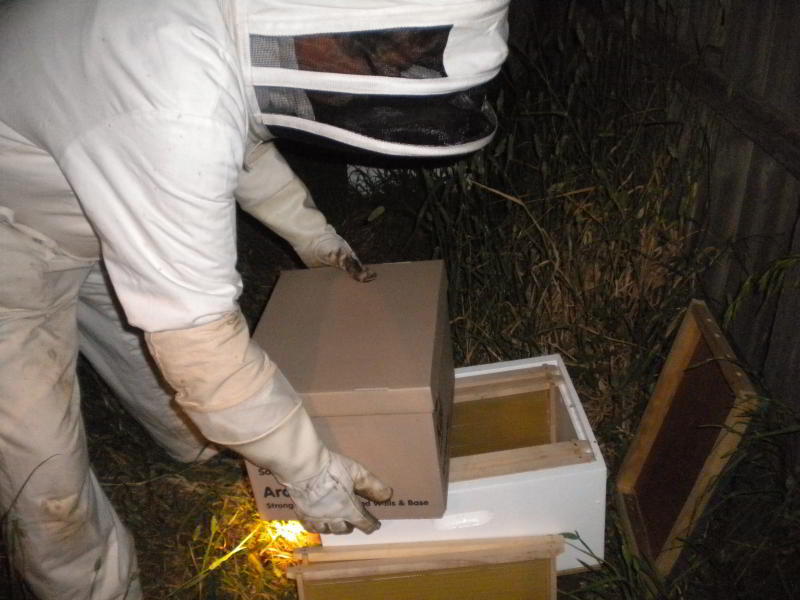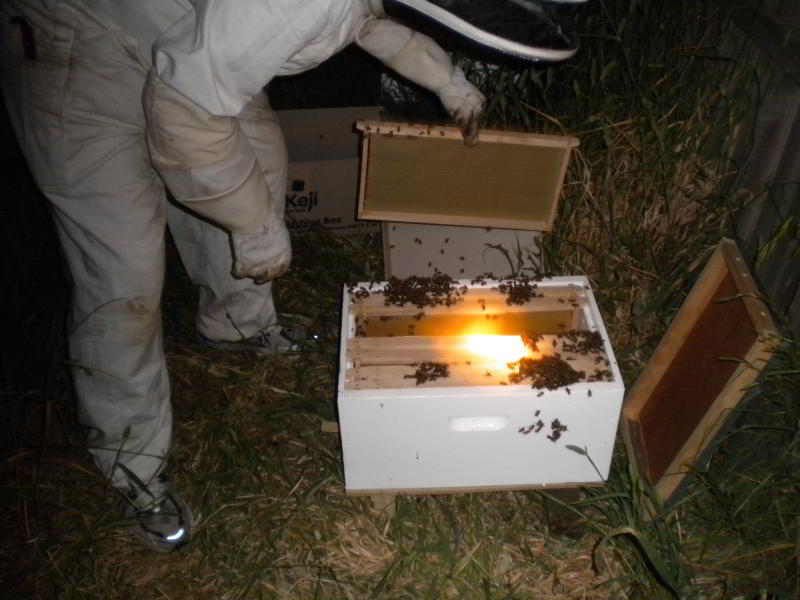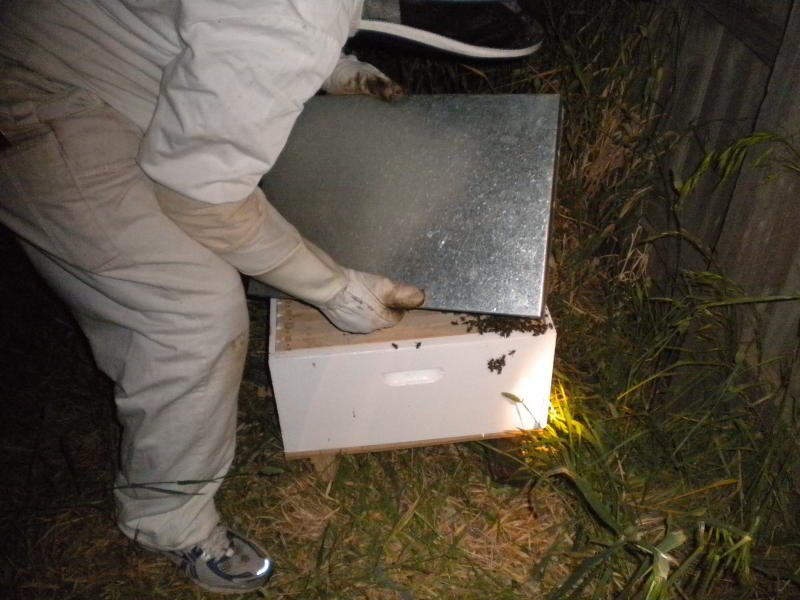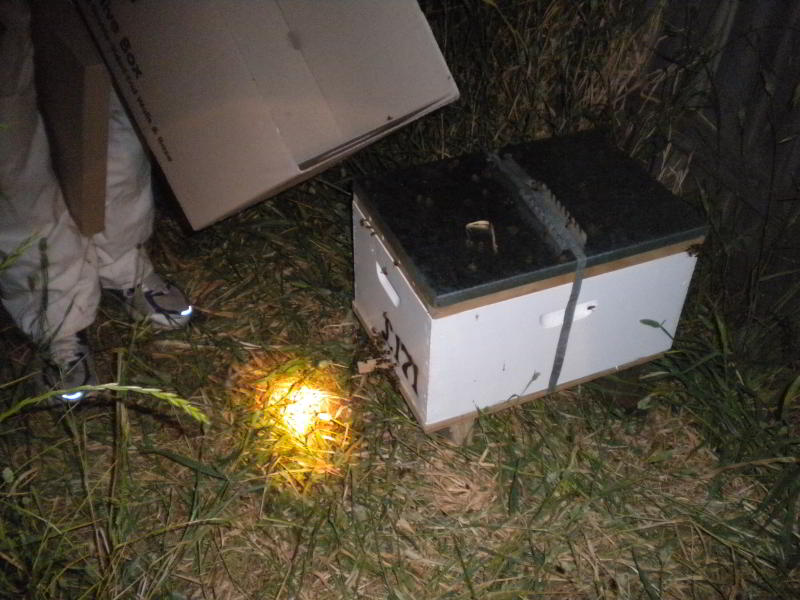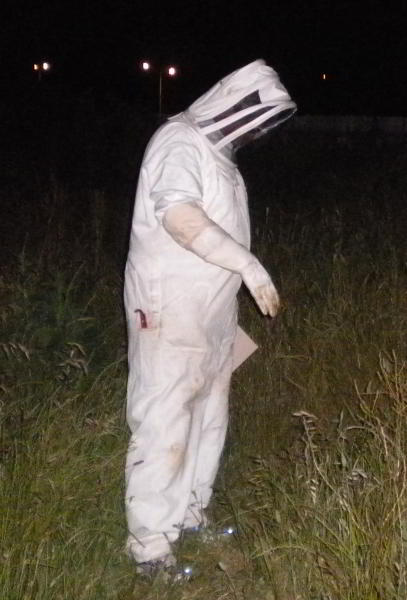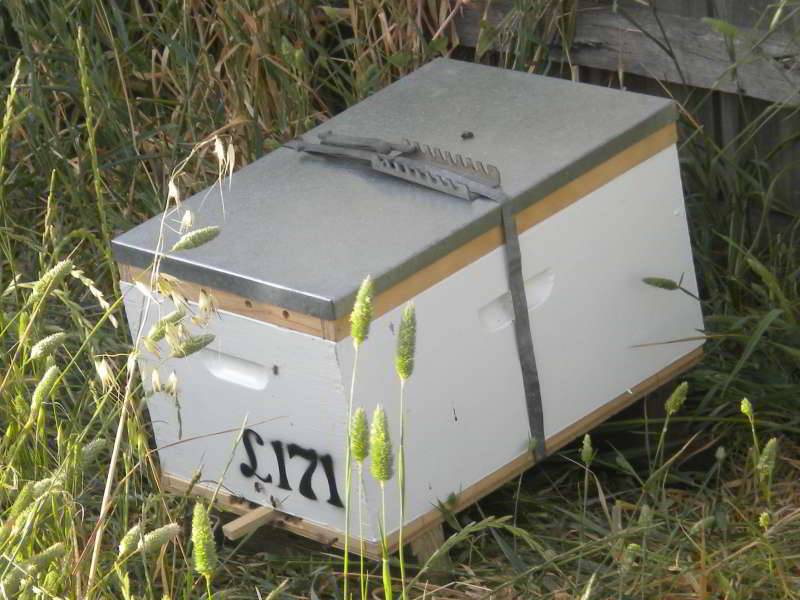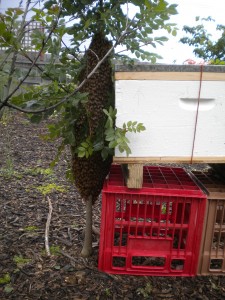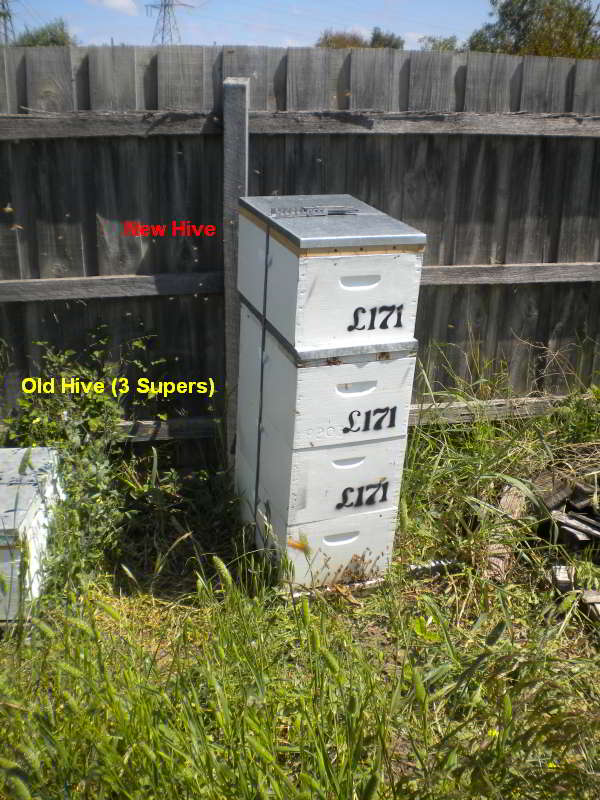Category Archives: Honey
Glutton for Punishment
As if I hadn’t already been obsessing enough over bees and all things bee related, on the the Easter weekend I went to a mate’s mum’s place to help him clean up some of the hives and rubbish left over after they sold most of the hives his dad used to keep.
After his dad passed away over a year ago they had sold around 150 hives but there were 4 or 5 left that were in particularly poor condition and/or were my mate’s hives. In addition, a swarm had taken up residence in one of the empty hives left scattered around in the yard.
We went through over 90 boxes and retrieved around 25 that were in good enough condition to reuse or repair. The rest are slated for the fire. We also went through hundreds and hundreds of frames looking for those that could be reused. Most of them went straight into the incinerator to get rid of them and to reduce the risk of disease spreading to the working hives. The frames that can be properly cleaned and restrung will be used to start managing the hives properly again.
On the second day we tackled the hives and rehoused all the colonies in boxes that were in better condition. They still need a lot of work to rehabilitate them fully but they are in good enough condition to give my mate time to refurbish and repaint the remaining boxes so that he can get the hives back into good working order.
It took a bit longer than anticipated to complete the rehousing but it was a satisfying days work. Although I got a bit of stick from my better half for not being able to spend a day sightseeing like I had promised.
Next Easter, Guaranteed! I promise 🙂
How Sweet it is!
A few weekends ago I went up to Alexandra in the Victorian High Country to help my Beekeeping mate Pete with his beekeeping classes. Well, more precisely I was able to supply some full frames of honey from my new hives for his students to practice their honey extracting skills. In the process I was also able to extract the remainder of the honey from another four frames and bring home around 12kg of sweet natural honey.
I was pretty impressed, and so was Pete, with the amount of honey we extracted from the six frames, particularly since there was a cold snap on the day and we were working without heaters etc. so the honey was pretty thick.
Here are some happy snaps of the second day out with the bees, learning to make frames, firing up smokers, inspecting the hives and extracting the honey.
And how does it taste? Absolutely marvelous!!
Thar’ BEE even more
Yes, I know! But just be thankful. Because my other choices included,
“Two Bee (hives) or not two Bee (hives)” and “Bee-gora, there’s another one!” and many others, equally as cringe-worthy 🙂
This is another post that has been waiting in the wings (so to speak – and no, I’m not going to stop) for me to get around to finishing.
A few weeks after setting up the first of my own bee hives, my beekeeping mate, Pete, called me and asked, “Are you at home?”
“I’m at Kinglake”, I replied, “but I should be home by 10:00pm, why?”
“Oh, a friend of mine who works at Southbank called me and said there was a swarm on a tree outside their office and asked if I was able to remove it, so I thought that if you wanted a second hive, this would be a good way to do it.”
“Absolutely!” I said without hesitation, “I’ve got enough frames to make up another hive so, no worries”.
“OK, I should get to your place around 10:30pm, see you then”
As I headed home, I thought about the turn of events. I’d missed out on collecting two swarms in the backyard but, in the space of a few weeks, I was going to have two hives of my own. It would be interesting to see what these bees were like especially since they were right in the heart of the Melbourne.
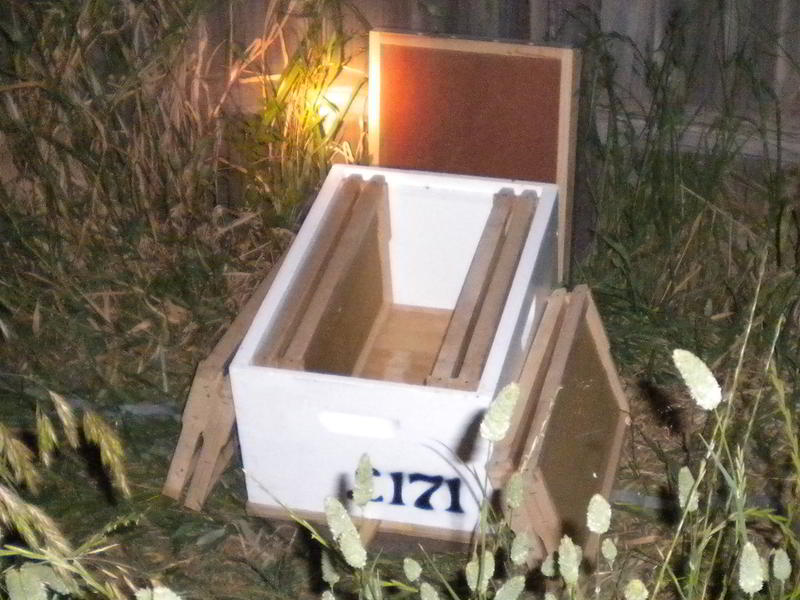
Anyway, I set up the hive in the backyard and Pete arrived just as I finished. He said that it was an interesting experience being in the heart of the city with his beekeeping gear on collecting a swarm. His friend had kindly given him an office storage box to collect the bees.
So, armed with a small flashlight, used sparingly to prevent the bees from attacking, we took out four frames to make some room and then we (read Pete) opened the cardboard box and upended the bees into the hive.
A few more shakes of the box and the majority of the bees were in the hive 🙂
We weren’t worried about the spillover as they would find their way in.
The frames were slowly lowered into the hive.
As long as you move things slowly the bees will flow like honey (!) around them.
The lid was put on and secured.
And the rest of the stragglers were unceremoniously dumped on the ground in front of hive to find their own way in.
We just had to check there were no stragglers on Pete before he got changed, then we packed up and called it a night.
The next morning, I checked and they had settled into their new home just fine.
They took a little while to start building up their numbers but that was to be expected but they are going from strength to strength now and they look like they are very good quality bees and they are reasonably docile.
We tried to figure out where they might have come from and we suspect that they may be from one of the hives that a number of hotels are keeping in the city now for fresh honey and pollination of their herb gardens etc. Wherever they came from, they’re a busy bunch of buzzing bees 🙂
Strange how things turn out, but…What will BEE, will BEE! (Told you I wouldn’t stop 😉 )
Cap’n, There be Bees Here
An update I actually started to write before Christmas! That summer break just broke my will to write 🙂
After being unsuccessful collecting two swarms (the little buggers apparently didn’t like the accomodation we set up for them and flew off) we decided to split a hive to get a new colony started.
Splitting a hive is essentially artificially swarming to create two hives from one. The idea is that you remove the existing queen and some bees, brood and honey from the existing hive and place it in a new hive. The existing workers will leave the new hive to go foraging but will return to old hive as that is where they are used to returning (a bit like homing pigeons). As the new workers hatch and eventually go foraging they will always return to the new hive as it is their home. The queen will happily continue to lay eggs in the new hive since we have moved some of the frames she is used to working on.
The workers in the existing hive will realise that the queen is gone and, if none are already growing, will create a new queen by feeding some larva on royal jelly to make sure they become queens. This is exactly what happens when the hive swarms so we are mimicking a swarming event.
We checked to confirmed there were new queen cells in development and then set about creating the new colony.
First we assembled a new box and frames leaving a four frame gap in the new hive to place some frames from the existing hive.
Then we took out four frames of brood (in various stages of development) and honey, making sure we included the queen and placed them in the new hive. This new hive was placed on top of the original hive with a lid in between them. The top hive was placed with the entrance in the opposite direction to ensure the bees didn’t get confused about which hive was which. It’s interesting that, when bees are move more than a kilometer they re-orient themselves immediately in their new surroundings but they can get confused and lost if the hive moves as little as 1 metre.
After a week or so we started to rotate the top around, a little each day, until it was facing the same way as the others. We then moved it next to the original on a stack of crates and, over the week we lowered in into it’s final position.
Both hives are doing well , the old hive has successfully re-queened and the new hive is forging ahead with the original queen. In fact, it’s going so well that I had to add a third super just before I left for Timor.
UPDATE: While I’ve been away, my beekeeping mate has had to add a fourth super because the third super is now full of honey!! I may be able to extract a couple of frames when I get home! Woo Hoo! 🙂
